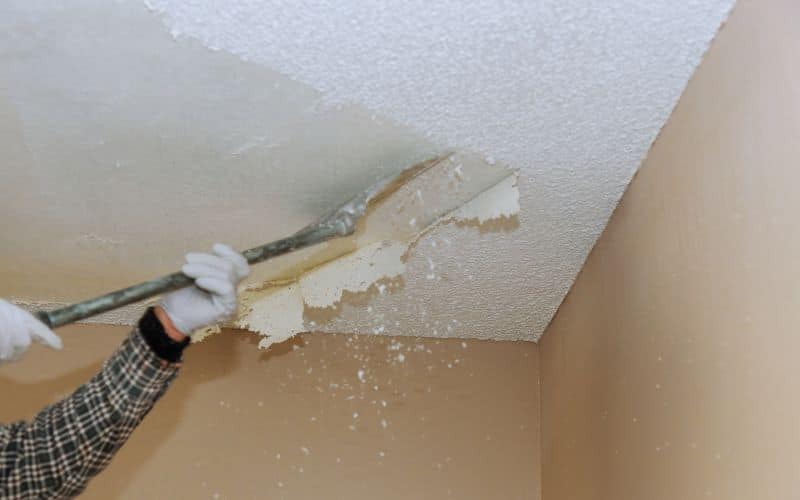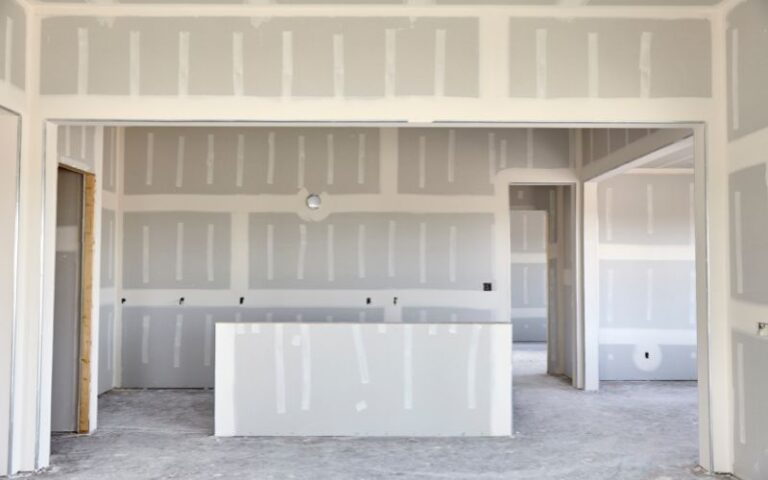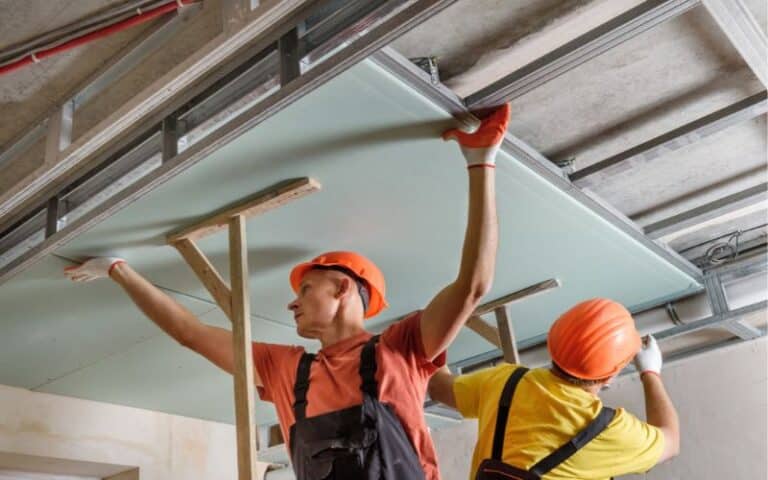Manufacturers today design walls to incorporate into an opening instead of standing out, sometimes making your wall look boring.
However, you can spice up your drywall and make it look more beautiful with a drywall texture. Doing so can add more personality to your home than even painting cannot.
Aside from that, texturing your drywall hides wall errors. But choosing the best drywall texture for your home can be very difficult, especially when you have no prior knowledge.
Drywall texture techniques and ideas vary greatly depending on your preference. Whether you want a subtle look or a more dramatic effect, there are various techniques you can choose from that will give your wall the exact beauty you imagine. Before you texture your wall, knowing how to go about it is best. However, it’s easier than you think.
As you read this article, you will learn the best texture techniques, the easiest drywall texture, and how to apply it on your wall.
And at the end of the article, you can choose the texture ideas best for your home drywall.
Ready for a Drywall Quiz?
Six Best Drywall Techniques Ideas

There are various drywall texture techniques and ideas. However, the best ones you can use for your wall designs include the following;
#1. Orange Peel
Orange’s peel techniques look exactly like their name-the peel of an orange. Before carrying out this technique on your drywall, it’s best to prime the wall to ensure it’s free of dirt and smooth.
This texture is one of the best drywall techniques because it offers an understated inflection to your wall space. Therefore, you can choose this idea if you want a good drywall texture.
The orange peel technique uses a spray gun to apply the compound in a random pattern.
And if you want to adjust the texture to your preference, you need to adjust the nozzle size.
#2. Sand Swirl
This idea is a combination of comb and sprayed sand textures. Although it is not as easy as the other technique, it gives your wall a beautiful ocean-like look.
With a thick brush, you can create different patterns, such as interlocking spirals or fan shapes in rows.
To achieve these designs, mix water and sand and leave the mixture overnight. Then add it to the walls with a thick brush and leave it to dry.
#3. Knockdown Technique
This technique is a unique, rustic pattern like a stucco. An extra step to orange peel can achieve it. The application process is similar to other textures, so it is simple.
How do you apply it to your wall?
- To apply, you need to sand and prime your walls first.
- Then, use a spray gun to apply it on drywall and compress it.
- Run a roller over it. Once you have achieved the desired texture, use a trowel to smooth out the bumps.
#4. Slap Brush
Slap brush is also called stipple texture or crow’s feet, perfect for a rustic-themed look. Applying this texture idea leaves you with an exciting and fun-filled experience.
However, you must exercise patience and apply it correctly to give you the sunburst or fan-shaped imprints.
To apply this drywall texture;
- You need to mix the drywall compound into a liquid.
- Add the mixture to a small wall section and work in it before it dries.
- Put more liquid on the tip of the slap brush and slap it against the wet joint compound.
- To adjust the texture result, you must adjust the pressure, speed, and angle at which you slap the material on your wall.
#5. Skip Trowel
Although skip trowel is one of the most challenging textures, its striking and crafty effects are delightful.
It is best applied by hand as this helps cover mistakes, making it time-consuming. To apply,
- Use a curved knife to spread very thin layers of your chosen material to the wall.
- Then, hold your knife at any angle and paste it over the surface in overlapping circles.
- Finally, use a trowel at any angle to pick up some of the textures and leave some behind. This technique creates the iconic stucco texture.
#6. Comb Texture
The combed texture is an ideal type to consider when looking for a gorgeous texture with a vintage vibe for your wall. It gives a finished look, like a comb you drag across the surface.
Thus it ends up looking like a rainbow or fish scales. To achieve this look on your wall, apply the drywall compound, then use a toothed trowel to add any design you want.
What is the Most Popular Wall Texture in 2023?
Various types of wall textures beautify the house. However, the most popular types used in houses in recent years are orange peel and knockdown.
These two texture techniques are simple and easy to apply; thus, most homeowners prefer using them on their walls.
These two textures are suitable for residential and commercial buildings and help hide minor imperfections on your wall without being extravagant.
Although these two textures have similar properties, they also have their differences.
The table below highlights the differences between these two.
| Orange Peel | Knockdown |
|---|---|
| Doesn’t require additional equipment or skills | It requires more effort |
| It is long-lasting | It’s prone to breakage and damage because of its exposed and extensive flat surface |
| It attracts dirt easily, so it needs regular cleaning and maintenance | It’s more time-consuming when cleaning knockdown textures |
| As a result of its shallow depth, it’s difficult to remove this texture | Removing this texture is very easy |
What is the Easiest Drywall Texture to Use?
The orange peel technique is the easiest drywall technique and is affordable for homeowners. It’s not surprising that homeowners like going for this drywall texture.
Applying your orange peel is easy, but you must also apply it properly to attain the design.
Here ate the steps to apply the Orange peel texture.
Step 1: Prepare the Wall
You must prepare your wall by removing the wallpaper, sanding the wall to ensure a smooth surface, and spreading a coat of paint primer.
However, you can add a primer directly if your wall has paint.
Step 2: Prepare the Powder Mix
Follow the instructions on the package about how to prepare the powder mix. If you have a power agitator, it’s best to use it for mixing.
Step 3: Apply the Mixture
Apply the mixture to the wall using a sprayer or hopper gun. Adjust the setting of the sprayer to high pressure and a slim nozzle setting.
You can now start spraying across the wall at a constant speed. Before you apply your mixture, try on a piece of drywall to understand how you can achieve your desired look.
Step 4: Paint the Wall
Paint the wall with good latex-based gloss paint. You can now add any decoration you want.
How Do You Texture Drywall for Beginners?
Texture drywall adds visual interest and conceals the surface defect. Texturing your drywall is a straightforward DIY process even a beginner can try in your home.
Here are the steps to follow:
- Ensure you install the drywall perfectly and remove any dirt from its surface.
- Cover the surrounding materials with cloths or plastic sheets to prevent any spills from the texture materials.
- You can now select your preferred method. You can use a texture roller, hand brush, or sprayer.
- Then you have to prepare your texture materials according to your chosen method. If you are selecting a texture sprayer, you need to mix your texture blend with water.
If you are using a trowel, you might need a premixed joint compound. It depends on your preference.
Just ensure you follow the manufacturer’s instructions.
- Before applying your texture, it’s best to test it on a small part of the drywall. Doing so will enable you to practice your skill and attain your desired result.
- When applying the texture, it’s advisable to start from edges and corners before you apply it to other parts of the wall. Doing so will help you attain an even pattern.
If you use a sprayer, maintaining a consistent distance from the wall is good for a consistent result.
- Also, you can part your wall in sections so that you will be able to focus on one area at a time. Thus it enables you to apply more consistent texture materials across the wall.
- After applying the drywall texture, you can create the pattern or adjust the thickness.
- The next step is to allow the texture to dry completely. It’s best to follow the manufacturer’s instructions.
- You can sand the dried texture to create a smoother finish.
- The last step is to apply the primer. Applying the primer when the texture and sanding dry completely is best.
Once the primer dries, you can paint your wall with any preferred color.
When applying a drywall texture, follow the manufacturer’s instructions for the best results. Your first attempt might not give you the desired result.
With more practice, you will improve your technique.






